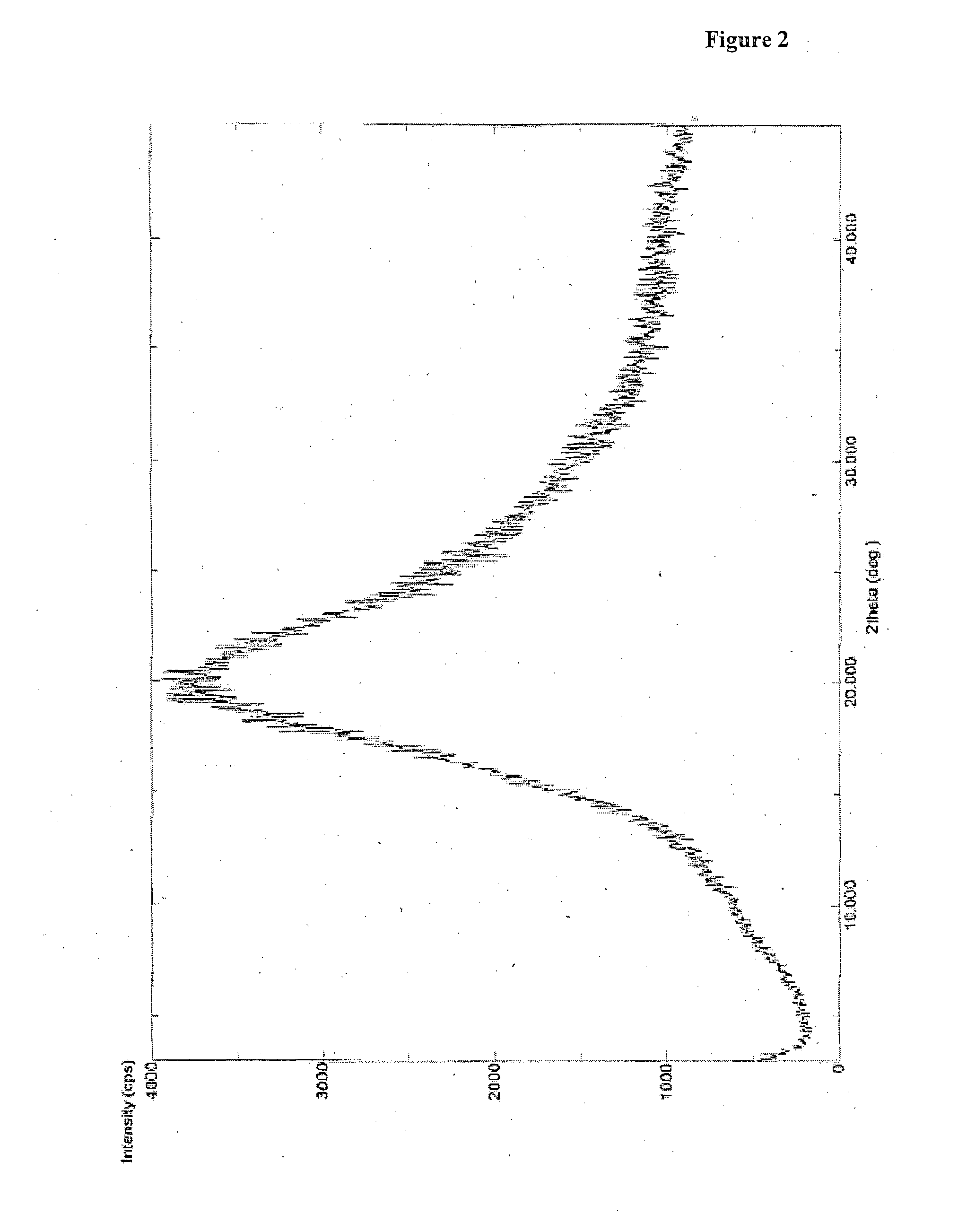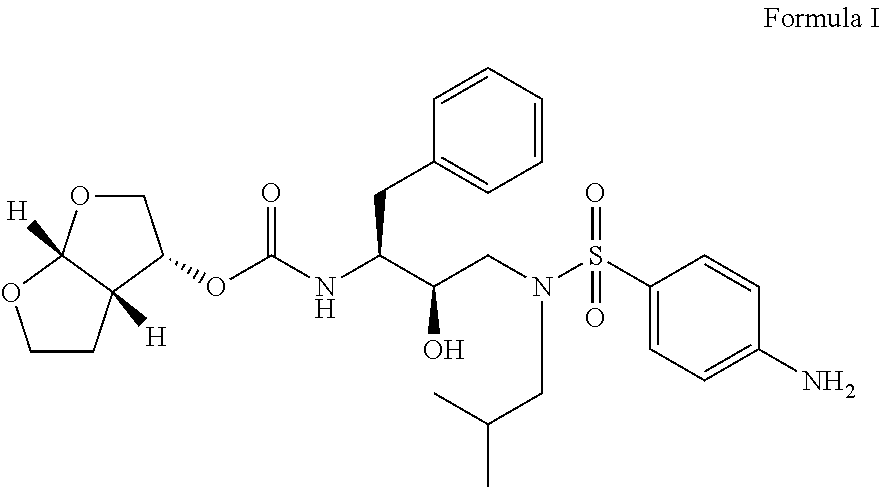Process for preparation of darunavir
a technology of darunavir and process, which is applied in the field of process for the preparation of darunavir, can solve the problems of reducing product selectivity, not disclosing, and difficulty in large-scale operation, and achieves the effects of high purity and yield, simple process, and cost-effective process
- Summary
- Abstract
- Description
- Claims
- Application Information
AI Technical Summary
Benefits of technology
Problems solved by technology
Method used
Image
Examples
example 1
Preparation of 4-amino-N-(2R,3S)(3-amino-2-hydroxy-4-phenylbutyl)-N-isobutyl-benzenesulfonamide of Formula II
[0168]A 3 L round bottom flask fitted with a mechanical stirrer, thermometer socket, addition funnel was charged (1-benzyl-2-hydroxy-3-isobutylaminopropyl) carbamic acid tertiary butyl ester of Formula IV (100 gms) and MDC (1500 ml). The reaction temperature was stirred for 10 minutes at 20° C. to 30° C. and to the resultant solution sodium bicarbonate (37.5 gms) and water (300 ml) was added. N-(Acetylamino)benzenesulfonyl chloride was charged in equal lots (4×19.1 gms) at about 25-30° C. The reaction was stirred at about 25°-35° C. for about 2 hours and the reaction completion was monitored by HPLC. After completion of the reaction, the layers were separated and organic layer was washed with ammonia solution (200 ml) and then with aq HCl solution (9 ml of con. HCl+300 ml water). The layers were separated and the MDC was distilled off completely to obtain residue. To the resi...
example 2
Preparation of 4-amino-N-(2R,3S)(3-amino-2-hydroxy-4-phenylbutyl)-N-isobutyl-benzenesulfonamide of Formula II
[0171]A 3 L round bottom flask fitted with a mechanical stirrer, thermometer socket, addition funnel was charged (1-benzyl-2-hydroxy-3-isobutylaminopropyl) carbamic acid tertiary butyl ester of Formula IV (100 gms) and MDC (2000 ml). The reaction temperature was stirred for 10 minutes at 20° C. to 30° C. and N-(Acetylamino)benzene sulfonyl chloride (79.8 gms) was charged. The reaction mixture was allowed to cool to 10° C. and aqueous sodium bicarbonate solution (1000 ml) was added. The reaction temperature was raised to 25° C. to 30° C. and maintained for about 1 hour. The layers were separated and organic layer was washed with ammonia solution (100 ml) and then with DM water (500 ml). The layers were separated and the MDC was distilled off completely to obtain residue. To the residue, methanol (800 ml) and CP. HCl (125 ml) was charged and the reaction temperature was raised ...
example 3
Preparation of darunavir propionate solvate
[0174]A 2 L round bottom flask fitted with a mechanical stirrer, thermometer socket, addition funnel was charged 1-([[(3R,3aS,6aR)hexahydrofuro[2,3-b]furan-3-yloxy]-carbonyl]oxy)-2,5-pyrrolidinedione of Formula V (65.6 gms), ethyl acetate (1000 ml) and water (200 ml) at 25° C. to 30° C. To the reaction mass Formula II (100 gms; obtained from Example 1) was added at 25° C. to 30° C. and stirred for about 90-120 minutes at same temperature and the reaction completion was monitored by HPLC. After completion of the reaction, the organic layer and the aqueous layers were separated and the organic layer was washed with 5% aqueous sodium bisulfate solution (2×300 ml; 15 gms of sodium bisulfate+285 ml water) followed by with 10% aqueous potassium carbonate solution (300 ml) and then with water (300 ml) and aqueous sodium chloride solution (300 ml). Aqueous and organic layers were separated and the organic layer was distilled off completely under va...
PUM
| Property | Measurement | Unit |
|---|---|---|
| Electrical conductance | aaaaa | aaaaa |
| Acidity | aaaaa | aaaaa |
Abstract
Description
Claims
Application Information
 Login to View More
Login to View More - R&D
- Intellectual Property
- Life Sciences
- Materials
- Tech Scout
- Unparalleled Data Quality
- Higher Quality Content
- 60% Fewer Hallucinations
Browse by: Latest US Patents, China's latest patents, Technical Efficacy Thesaurus, Application Domain, Technology Topic, Popular Technical Reports.
© 2025 PatSnap. All rights reserved.Legal|Privacy policy|Modern Slavery Act Transparency Statement|Sitemap|About US| Contact US: help@patsnap.com



